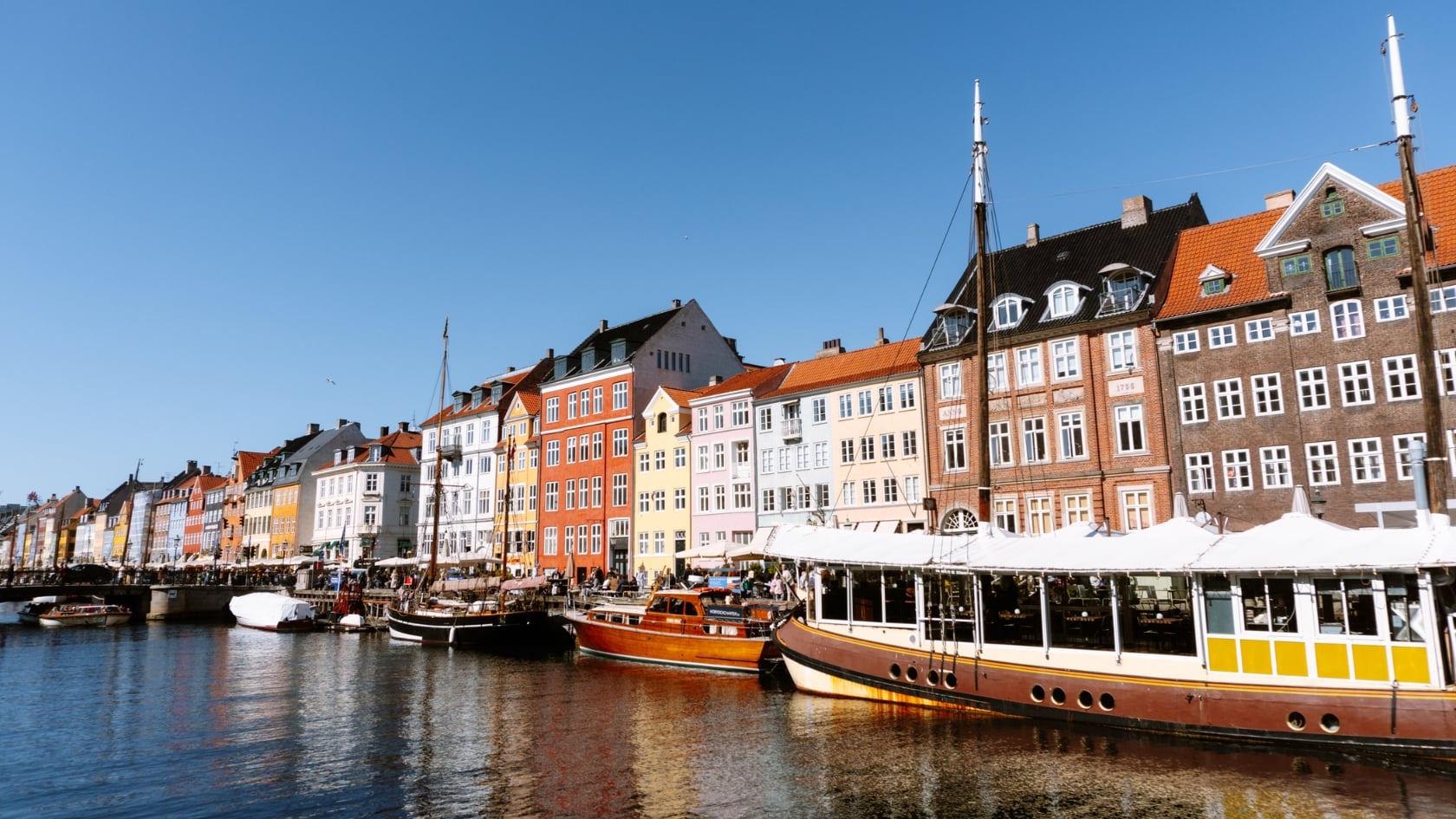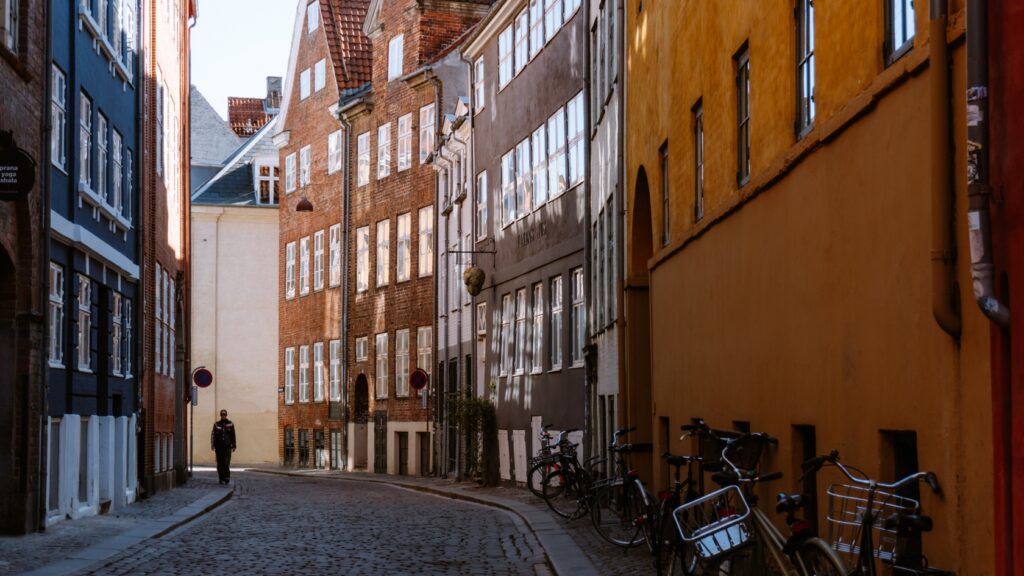TRAVEL GUIDE FOR DENMARK
Discover Denmark, a land of fascinating coastlines, Viking history and modern architecture. From fairytale castles to bike-friendly landscapes and picturesque islands like Fyn and Bornholm.
COPENHAGEN
23 Things to do in Copenhagen: Best places to visit
Copenhagen, a city with a relaxed atmosphere and the most colourful harbour, Nyhavn,…
3 Days in Copenhagen: Itinerary of what to see in Copenhagen (+ map)
Copenhagen, the capital of Denmark, is known for its canals, delicious cuisine, historic…
Copenhagen Card: How to save in Copenhagen? (2024)
Copenhagen Card includes unlimited transport and access to Copenhagen’s most famous sites, museums…
Transport in Copenhagen: Our detailed guide and experience
Copenhagen is known for its top-notch infrastructure and public transport that are environmentally…
USEFUL INFORMATION
When to visit Denmark
Denmark is beautiful all year round, but each season brings its own specific highlights and types of activities to do during your visit. Here is an overview of what you can expect in each period:
Spring (March to May): Spring is the perfect time to visit Denmark if you want to enjoy the awakening and blooming nature without the summer tourist crowds. Copenhagen in particular is beautiful with its pink cherry orchards.
Summer (June to August): Summer is the most popular time to visit due to the warm and often sunny weather. Head to the beach and enjoy a picnic and outdoor activities with the locals. The days are at their longest during this period, with almost continuous daylight in the north of the country, giving you more time to explore. Summer festivals and cultural events, including the Midsummer Night celebrations (Sankt Hans Aften), attract visitors and locals alike.
Autumn (September to November): Autumn in Denmark brings cooler temperatures and fewer tourists. The ideal season for nature lovers who want to explore the countryside or enjoy Copenhagen’s streets more leisurely.
Winter (December to February): Winter in Denmark is cold and dark, but with many unique experiences. Christmas markets and festive decorations will turn cities into fairy-tale sceneries. Despite the short days, you can experience the magic of the Nordic winter season, including traditional Christmas markets and New Year celebrations. Winter swimming in the sea is also a popular activity.
Transport in Denmark
Public transport
Public transport in Denmark is highly efficient and well-organised, making it easy to get around the country. The system includes trains, buses and ferries.
Danish Railways (DSB) operates fast and reliable train connections between the main cities and regions, making it easy to get from Copenhagen to Aarhus or Odense. Here is a link to the official DSB website.
The extensive train network is complemented by urban and intercity buses, which provide an affordable and convenient alternative. In addition to city and regional bus services, Denmark also has a network of express and long-distance buses that connect major cities and offer connections to neighbouring countries.
You can use Rejsekort to easily plan your journeys and pay for public transport in Denmark. This electronic card allows seamless transfers between different modes of transport across the country and replaces traditional paper tickets. You can buy a season ticket at most train and bus stations and recharge as needed.
Copenhagen, the capital of Denmark, also has an extensive network of cycle paths that make getting around the city easy and environmentally friendly. In addition, Copenhagen offers the Bycyklen city bike system, which is a popular and convenient alternative for tourists and locals alike.
Ferries in Denmark play a key role in connecting the mainland with the islands, including Bornholm and the islands in the Faroe archipelago. These ferries offer a convenient way to explore the Danish islands and enjoy the spectacular sea views. You can search for all ferries at this link.
By car in Denmark
The motorway network in Denmark is well developed and allows fast movement between cities and regions. Most motorways in Denmark are free of charge, except for a few places such as the bridges over the Great Belt (Storebæltsbroen) and the Øresundsbroen (Øresundsbroen), where tolls are charged. You can pay the toll electronically or simply by credit card on the spot.
The official toll payment sites for these bridges are:
- For Storebæltsbroen (bridge over the Great Belt): www.storebaelt.dk
- For Øresundsbroen (Øresund Bridge): www.oresundsbron.com
Maximum speed limits in Denmark are usually set at 130 km/h on motorways, 80 km/h on main roads outside towns and 50 km/h in urban areas, unless otherwise stated.
Parking in Denmark is well organised, but in larger cities like Copenhagen or Aarhus, finding a parking space can be a challenge. In many cities, there are parking lots on the outskirts of towns that are free and provide links to public transport to the city centre.
Culture and tradition in Denmark
Culture
The culture in Denmark is rich and diverse, reflecting its long history of seafaring, innovation and social equality, which are deeply rooted in Danish society.
Denmark has a strong tradition in art and design, as evidenced by the works of world-renowned artists such as Bertel Thorvaldsen and Asger Jorn, as well as in modern design and architecture, where Denmark is a world leader. The country is also known for its openness and tolerance of different lifestyles and opinions.
In addition to art and design, Denmark is home to renowned literary works and famous writers such as Hans Christian Andersen, whose fairy tales are loved around the world.
Denmark also hosts many music festivals and cultural events, from jazz festivals to rock concerts and cultural festivals celebrating Danish and international culture.
Traditions and festivals
One of the best known and most distinctive traditions in Denmark is the celebration of Juleaften (Christmas Eve), which takes place on 24th December. This celebration includes a traditional Christmas dinner, usually with roast duck or pork, followed by the giving of gifts, which usually takes place after dinner.
Another important tradition is Mortensaften (St. Martin’s Eve), which is celebrated on 10th November. According to tradition, duck or goose is prepared for this celebration in memory of the legend of St. Martin.
Denmark is also famous for celebrating Midzommeraften (St. John’s or Midsummer Night) at the turn of June, which is associated with traditions of bonfires, songs and stories about witches. People gather around large campfires, sing songs and enjoy the summer solstice.
In addition to these traditional celebrations, the Danes, like many other countries, celebrate the New Year with fireworks and parties. A special Danish tradition is jumping out of a chair at midnight to symbolize crossing from one year to the next and to bring good luck.
Because of Denmark’s legacy of seafaring and discovery, some regions have unique celebrations and festivals that reflect this history, including Viking festivals and historical reenactments.
Typical dishes in Denmark
Denmark’s cuisine is rich and varied, influenced by its Nordic location and long history of trade on the sea. Each region in the country offers its own unique specialities, from traditional fish dishes to innovative Nordic desserts.
Typical and popular dishes you can taste in Denmark include:
- Smørrebrød: A traditional Danish open sandwich, usually served on crusty dark bread (rugbrød) with various toppings such as smoked salmon, herring or pate.
- Frikadeller: Danish meatballs, often served with mashed potatoes, red or brown sauce and a vegetable side dish.
- Wienerbrød: Danish pastry, known outside Denmark as “Danish pastry”, which can be filled with cream or jam.
- Herring: marinated herring is a traditional part of the Danish diet, served as part of smørrebrød or as an appetizer.
Danish cuisine emphasises seasonality, fresh ingredients and innovation in gastronomy, making it part of the wider New Nordic Cuisine movement. Local beers and cider are popular. Tap water in Denmark is safe to drink and of high quality.
There are many excellent restaurants throughout Denmark, from outdoor street food stalls to world-class restaurants.
Tipping in Danish restaurants is usually not expected as the service is included in the price. However, it is common to round the bill up or leave a small tip if you were satisfied with the service.
☞ See all destinations.




